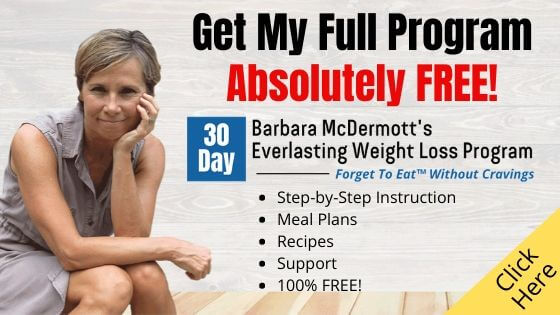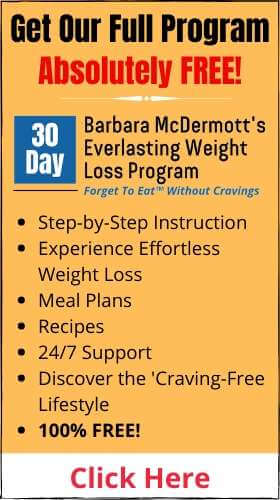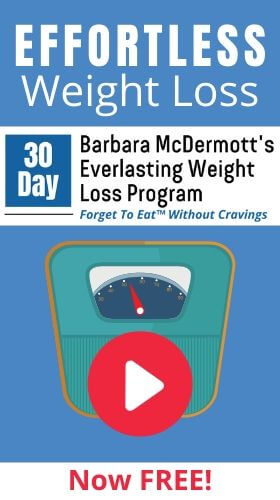Weight Loss and Insulin is like Breathing and Altitude.
Weight Loss is really hard when you are in high insulin.
Breathing is really hard when you are in high altitude.
If you wish to breathe more easily come down from the high altitude.
If you wish to lose weight more easily come down from the high insulin.
All the ‘healthy eating’, health heroism, food martyrdom, sacrifice and sweat will get you nowhere…if you are operating in high insulin.
Insulin is your weight loss boss.
Attempting to lose weight without knowing insulin is an example of operating in false hope.
Hi friends, this is Barbara McDermott with Shift Formula. I help my clients get out of what I call health chaos. Working through cancer, downgrading debilitating fibromyalgia, resolving blood pressure, diabetes and heart disease…those are all cousins.
Avoiding Alzheimers is another cousin.
All of these conditions have common denominators. And all of them are often associated with chronic obesity or what I call “overweight-ness”. It’s a disability…. or inability. The frustrating and exhausting inability to lose weight.
Watch: For Weight Loss Only ONE THING Matters
Unconventional Weight Loss
I help my clients do it…lose the damn weight.
But probably not in the way you might think.
You don’t have to look very far to find nutritionists, fitness trainers and celebrity gurus telling us things like: eat a more nutrient dense profile, eat ethically, watch your portion size, eat mindfully and gratefully.
They’ll also tell us to walk 10,000 steps every day. Pedal. Kick Box, and hit the exercise intensity switch.
And each of those could influence weight loss for you.
What Holds You Back From Losing Weight?
However, there is a single internal bio-chemical variable that is keeping you from being able to lose weight. It’s the thing that makes you “weight loss disabled”. You could implement every action I just listed and still be in weight gain mode.
That Weight Loss Variable Is Insulin
As I write this, my clients and I, our SHIFT community, are doing a five day extended intermittent fast.
That means that for five days we focus on dialing down insulin.
Most people assume that we’re not eating. That we’re starving. Sacrificing!
They can think that if they want. But we know how to fast without being hungry. To be in a fasted state simply means to significantly downgrade the amount of insulin we have circulating.
Come down from the ‘high altitude’ of insulin and enjoy 5 days of lower insulin. It’s like a vacation from insulin. And that, my friend, is how you win.
Win? Win at what?
Win at weight loss.
Win at compromising cancer.
Win at avoiding or reversing Alzheimer’s.
Win at resolving heart disease and neuropathy and inflammation.
Win at de-plaque-ing blood vessels and brain cells.
Win. Win. Win.
How Do We Dial Down The Insulin?
My fasting group started on Monday. We’re almost at the end of day two and we’re going till Friday.
We all dial our Shift in nice and tight this week. We move our weight loss / health gain forward with concentrated focus. Funny. We all agree that our SHIFT fasting weeks are easier than our daily life weeks.
But what’s really going on here is that when we’re fasting, or eating SHIFTed, we lean on a more fat-focused way of eating than the conventional carbohydrate-lopsided eating.
So, naturally, our circulating glucose goes way down. And a downtick in inulin naturally follows.
What Is Circulating Glucose?
Well, every gram of carbohydrate you consume… salads or pastas or breads or whole grains or fruits or root vegetables…. whether complex carbohydrates or simple carbohydrates….. is blood sugar, glucose.
The blood sugar that you hear doctors about is glucose. Glucose circulating in your blood. Your body makes glucose, but the large amount of blood sugar that many grapple with and ends up in your blood comes from the carbohydrate you eat.
How a Bagel Influences Blood Sugar
Here’s an example that I often use.
One bagel puts a small bowlful of sugar into your bloodstream. A total of 16 teaspoons of sugar. That’s how much sugar goes into your bloodstream from one bagel.
Roughly 64 grams of carbohydrate that make up the bagel quickly breaks down into glucose during digestion and that glucose is promptly deposited into your bloodstream. Blood Sugar. A bagel is blood sugar.
This particular bagel example is Panera Bread Company’s designated Breast Cancer bagel. I find it a conflict and a conundrum that we use cancer cell fueling foods to raise money for the very disease we are trying to cure. Blood sugar surges from foods like bagels and the consequential insulin rise are the very internal condition cancer cells are primed to take advantage of.
So, since weight loss can’t happen with elevated insulin, and elevated insulin is associated with every health challenge I listed above, we dial our insulin way down for 5 days during our intermittent fast.
We do this by restricting our eating to foods that don’t deposit sugar into our blood and don’t stimulate an insulin release. That gives our body a full 5 day insulin vacation.
That’s the way to resolve insulin resistance. That’s the way to lose weight.
The ‘Eat Healthy’ Directives That Keep Us Overweight & Sick
Unfortunately, most ‘eat healthy’ directives are carbohydrate focused. Like the newly famed Avocado Toast. Why is it labeled healthy?
Is it because of the natural fat component of the avocado? However, it is toast (carbohydrate) under avocado (fat and carbohydrate) under tomato (carbohydrate) under balsamic glaze (carbohydrate).
They are all blood sugar and insulin foods.
Replace the avocado toast with a few eggs cooked in butter with a side of bacon and you consume virtually no carbohydrate. No carbohydrate means no blood sugar surge. No blood sugar surge means no insulin release.
AND… No insulin release means you are better able to burn body fat.
Now that’s healthy eating… and delicious!
The Carbohydrate Conundrum
Okay…back to the glucose and a bit more light on carbohydrate and why, as a food category, it is what is keeping you from weight loss.
You’ve got to remember that you don’t need to eat any carbohydrate-glucose food because your body makes glucose.
That’s why carbohydrate, in science terms, is considered a non-essential macronutrient. It’s not essential because your body can create glucose from protein. So your body will do just fine without eating carbohydrate because it creates its own carbohydrates, so to speak, or glucose.
And guess what? Guess how much circulating blood sugar/glucose your body strives to maintain. Your body’s optimal amount is just 4 grams. Four grams of blood sugar. That’s about 83 mg/dl or roughly one teaspoon.
The bagel example puts in 64 grams. The bagel overwhelms your blood sugar by 60 grams. Instead of 1 teaspoon of sugar in your blood, your blood is now flooded with 16 teaspoons.
How Many Carbohydrates Are In Avocado Toast?
Toast/Grain 15-30 cbs
Avocado/Fruit 6 – 10 cbs
Tomato/Fruit 5 – 10 cbs
Balsamic Glaze appr. 6 cbs
TOTAL: 32 – 56 carbohydrates
Certainly, portion size matters greatly.
Though labeled ‘healthy’, the avocado toast is a glucose-insulin generating meal. And whoever thinks this is going to lead them out of weight loss will remain frustrated and defeated.
Yes, the avocado toast is a better choice than the bagel because it reduces glucose intake by half. Rounding at about 32 grams of carbohydrate for just one serving if it’s on low carbohydrate bread.
The 32 grams represents 8 teaspoons of sugar added to your blood.
The real lousy is that this kind of eating will have the eater who is trying to lose weight believing they are being ‘healthy’ but actually they’ll just end up being hungry….and NOT able to burn any body fat any time soon.
How To Replace Healthy Eating With Strategic Eating
Rather than trying to eat ‘healthfully’, shift to eating strategically. Following recipes can run you in circles.
Strategies lead you to where you want to go.
When we strategically eat to minimize blood glucose, a few other weight loss assisting actions occur naturally. Your glucose storing capabilities improve….greatly.
Let’s investigate.
Blood Sugar’s Role In Weight Gain
Blood sugar, which primarily comes from the foods we eat, should be used up quite quickly by the cells of your body as fuel for energy.
If you are in a weight-gain struggle, then you are taking in more fuel than your body can use.
Fortunately, you have two glucose storage options. Unfortunately, both of these tend to be at capacity. These glucose storage units are your muscles and your liver.
Glucose Storage Options
The liver preferentially supplies the brain with glucose energy as needed all through the day. The blood sugar that ends up in your liver storage is called liver glycogen.
Muscles also store glucose. Muscle glycogen is glucose at the ready for fueling sudden or strenuous actions like when I run after my dog Blue or lifting heavy objects in an emergency.
If we aren’t performing exertion-like actions daily, chances are good that our muscle glucose storing capacity is at its limit. No excess blood glucose can fit there, so, off to fat conversion it goes.
Other than exertion and exercise, the only other way to use up muscle glycogen to create more storage space for new glucose is to fats. To not eat. To eat less often. This is what we’re doing this week….and any other time we choose.
The other powerful benefit of fasting is that your liver has to opportunity to deplete its glycogen stores. Wringing the sugar out of our liver is hugely beneficial.
It’s imperative that a weight-gain struggling body curtail its sugar intake. And by sugar you know that includes all types of carbohydrate.
Blood sugar is weight gain.
The Transformation Of Blood Sugar Into Body Fat… Thanks To Insulin
Insulin’s main role is to lower blood sugar by dispersing the excess sugar all around the body.
Insulin removes the sugar / glucose from our blood and signals cells to open up and allow the sugar in.
There is a basic chain of events when it comes to blood sugar dispersal.
How Insulin Works 101
Priority #1: Immediate energy needs are addressed by insulin signaling cells to take some of the sugar into the cell to be used for fuel. Cells will ignore or resist insulin if they are already at fuel capacity.
Priority #2: Some sugar is shuttled to storage in muscles and the liver but, again, only if there is room. Glucose, sugar, storage is quite finite. When you take in more sugar than your body can use or store, the next action is conversion.
Priority #3: For what remains of the sugar, after the first two priorities above, insulin assists blood sugar entrance into fat tissue where the sugar converts into fat. It is merely a conversion of energy from glucose fuel to fat fuel.
Unlike Your Body’s Limited Glucose Storage Capacity, Your Body’s Fat Storage Is Limitless
This is the expanding waistline woe of diabetes or hyperinsulinemia or middle age.
Despite medical diagnosis, or our level of health, we all have to deal with ‘diabetes-like’ consequences. I’ve written on this topic and the impact high insulin levels have on our health here… Read more.
Priority #4: The final blood sugar dispersement action of insulin is ensuring the excess sugar is removed from the blood by assisting in the breakdown of sugar into smaller molecules.
Where The Real Damage Of Too Much Blood Sugar Occurs
These microscopic molecules of sugar, like fine, barely noticeable shards of glass, unfortunately end up sticking to proteins all over your body.
These sugar-crusted proteins stick to your blood vessel lining, nerves, brain cells, joint tissue, and more.
Health Deteriorating Consequences of Advanced Glycation Endproducts
They are called AGEs which stands for, Advanced Glycation Endproducts. This is why those with waist weight or elevated blood sugar (both caused by blood sugar) are more susceptible to heart disease, dementia, neuropathy, arthritis!
The scary thing is some people are more prone to weight gain and other more prone to chronic ‘pain’ or internal deterioration at the hands of glucose.
The worst chronic pain is the kind you don’t even feel until it reaches critical mass. We don’t feel our blood vessels being corroded. We don’t feel our brain cells accumulating plaque. We don’t feel our nerves deteriorating.
Sometimes those at greatest risk are the ones who think they’re healthy because they’re slim. They have no idea they’re rusting within.
Why Weight Loss and Insulin Are Polar Opposites
The reason you will not burn body fat in the presence of insulin is because that insulin must take care of the situation at hand… getting rid of the excess sugar in your blood.
When you send sugar into your blood, insulin HAS to disperse it.
When Insulin Is ON, Body Fat Burning Is OFF
When insulin is elevated, your fat burning enzyme production ceases. Halts.
There’s no body fat burning without lipase. Lipase production is turned off when insulin is turned on.
Every aspect of your body is in complete sync with another aspect. If you want your fat burning aspect turned on you’ve got to turn your blood sugar management aspect off. It’s that simple.
It’s Why Exercise Has Failed Us
This explains why even people exercising religiously for years struggle with their waistline.
Despite their heroic efforts their waistline is still growing bigger instead of getting smaller. They are exercising for weight loss but unable to achieve weight loss because they are not in weight loss mode.
They are in sugar-burning mode instead of fat burning mode. And these are separate modalities.
Fat burning absolutely requires quiet insulin.
We Lose Muscle Instead Of Body Fat!?
The plight of the sugar-burning exerciser is not pretty. They exercise for the intention of weight loss.
But rather than losing body fat, they lose muscle.
With elevated insulin due to their ‘healthy’ eating and subsequent insulin resistance development, they can only burn sugar, even when they’re in their Body Attack class.
They burn through blood sugar and then their body steals protein from their muscles to generate more glucose. They may see some pounds dropped on the scale but their waistlines won’t budge.
Why?
Because, they’ve lost muscle weight, not fat weight.
How Insulin Magnifies Cravings
And to add insult to injury, there’s the incessant cravings.
Blood sugar fluctuations are what stoke cravings.
Any rise of blood sugar, then insulin release, and thus ‘fall’ of blood sugar is the mayhem behind the madness that is carb cravings or sugar cravings. The poor souls trapped in body fat lockdown – sugar burners get tired quickly.
And then they crave.
Exercise. Eat. Repeat.
They are tormented by incessant, intrusive thoughts of food.
Food becomes their focus. Posting their latest feeding on social media, exchanging foodie ideas and recipes, or silently ashamed, keeping their food struggle to themselves.
Shame. Struggle. Silence.
It doesn’t have to be.
The Insulin and Weight Loss Conclusion
It’s a vicious cycle with seemingly no way out. But there is a way.
When you’re tired enough.
Angry enough.
In pain enough.
Had enough.
Weight loss and insulin.
You’ll never win.
You’ll try and try and try.
Weight loss will not happen until you minimize insulin.
Minimize insulin. Mobilize body fat.
And the added Yahoo! is that when body fat is mobilized cravings and appetite evaporate. You forget to eat. I know….sounds impossible. It is possible. And it is freedom.
Losing weight while not being hungry.
It’s what SHIFT insiders do every day. And do with more focus for 5 days every month. That’s why we are slimmer, stronger, saner, and smarter.
Know insulin and win.
If you want to breathe easier, reduce your altitude.
If you want to lose weight easier, reduce your insulin.
For weight loss, insulin is boss.

About Barbara McDermott
Regarded as America's #1 Insulin Suppression Coach, Barbara is the co-founder of SHIFT Health & Wellness Solution, and the best-selling author of the groundbreaking book, ‘FOOD B.S.’, With SHIFT, Barbara brings common sense to nutrition, weight loss and health gain. Her refreshing, no nonsense approach to uncovering the truth using non-negotiable rules of science demystifies food and how to defeat chronic disease once and for all.





No comments yet.